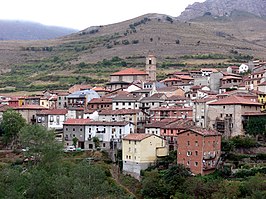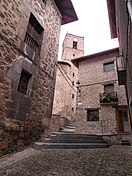
The kidney bean is a variety of the common bean named for its resemblance to a human kidney.
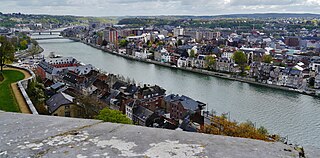
Namur is a city and municipality in Wallonia, Belgium. It is the capital both of the province of Namur and of Wallonia, hosting the Parliament of Wallonia, the Government of Wallonia and its administration.
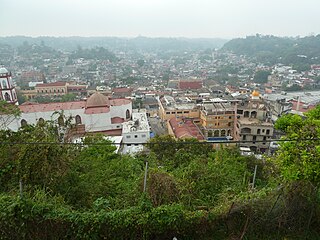
Papantla is a city and municipality located in the north of the Mexican state of Veracruz, in the Sierra Papanteca range and on the Gulf of Mexico. The city was founded in the 13th century by the Totonacs and has dominated the Totonacapan region of the state since then. The region is famed for vanilla, which occurs naturally in this region, the Danza de los Voladores and the El Tajín archeological site, which was named a World Heritage Site. Papantla still has strong communities of Totonacs who maintain the culture and language. The city contains a number of large scale murals and sculptures done by native artist Teodoro Cano García, which honor the Totonac culture. The name Papantla is from Nahuatl and most often interpreted to mean "place of the papanes". This meaning is reflected in the municipality's coat of arms.

Costa Rican culture has been heavily influenced by Spanish culture ever since the Spanish colonization of the Americas including the territory which today forms Costa Rica. Parts of the country have other strong cultural influences, including the Caribbean province of Limón and the Cordillera de Talamanca which are influenced by Jamaican immigrants and indigenous native people, respectively.

Stilts are poles, posts or pillars that allow a person or structure to stand at a height above the ground.

Santiago Tianguistenco, often simply called Santiago by locals, is a city located in Mexico State about thirty km south of the state capital of Toluca. It is the municipal seat for the municipality of Tianguistenco. It is located in the southwest part of the Valley of Toluca at the edge of the Ajusco mountain range that separates it from Mexico City. The name Tianguistenco (Tyanguistengko) is from Nahuatl and means “at the edge of the tianguis,” which is a traditional Aztec market. The section of the city where the industrial park is still bears this name. Historically, the area was known as having one of the richest and best-stocked markets in the Toluca Valley. Today, it is still home to a large permanent municipal market as well as a weekly tianguis that covers much of the historic center.
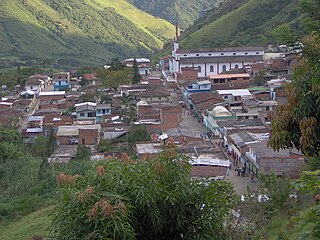
Liborina is a municipality in Colombia, located in the Western subregion of the Antioquia Department. It borders the municipalities of Sabanalarga, San Andrés de Cuerquia, and San José de la Montaña to the north; San José de la Montaña and Belmira to the east; Santa Fe de Antioquia and Olaya to the south; and Buriticá to the west. Its town center is 80 kilometers via Sopetrán and 77 kilometers via Santa Fe de Antioquia from Medellín, the capital of Antioquia. The municipality covers an area of 217 square kilometers and is connected by road to the municipalities of Sabanalarga, San José de la Montaña, Belmira, Olaya, and Buriticá.

Graus is a village in the Spanish province of Huesca, located in the Pyrenees at the confluence of rivers Esera and Isabena. It is the administrative capital of the region. It is one of the areas of Aragon in which is still preserved the Aragonese language.

Prats-de-Mollo-la-Preste is a commune in the Pyrénées-Orientales department in southern France, near the border with Spain and the Autonomous Community of Catalonia. The name Prats-de-Mollo comes from Catalan "meadows of Molló". Molló is a town just across the border and the Col d'Ares. La Preste is a spa resort town that was a separate village but is now included as part of the municipality. Prats-de-Mollo-la-Preste was the capital of the eponymous former canton. It forms part of the historical comarca of Vallespir and is part of Northern Catalonia.

Caparrones is a Spanish stew made of caparrón, a variety of red kidney bean, and a spicy sausage chorizo, both of which are local specialties of the Spanish La Rioja region. The shape of caparrón bean is shorter and rounder than common red kidney beans. The stew is regarded as one of the most important dishes in Riojan cooking.

José Raúl Anguiano Valadez was a notable Mexican painter of the 20th century, part of the “second generation” of Mexican muralists which continued the tradition of Diego Rivera, José Clemente Orozco and David Alfaro Siqueiros but experimented with it as well. Anguiano was born during the height of the Mexican Revolution, which would inspire a majority of his mural painting. He studied painting in his hometown of Guadalajara before moving to Mexico City to begin his career. His first major exhibition was held at the Palacio de Bellas Artes, at age 20. His works include over 100 individual and collective exhibitions with 50 murals, mostly in Mexico and the United States. As he continued his artistry with aspects of the Mexican muralism movement, he also experimented with other styles such as Cubism, Surrealism and Expressionism, with themes such as clowns and prostitutes. However, his most famous painting is “La espina” which depicts a Mayan woman digging a thorn out of her foot with a knife. His later works concentrated on depicting Mexico in vivid colors and traditional imagery.

Tamarindo is a district of the Santa Cruz canton, in the Guanacaste province of Costa Rica, located on the Nicoya Peninsula.
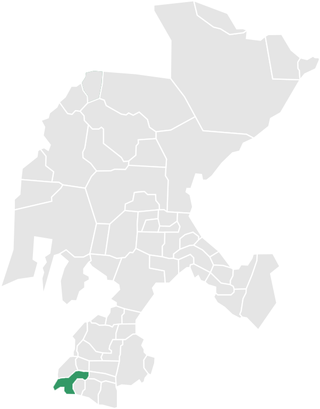
Teúl de González Ortega Municipality is a town and municipality located in the south of the Mexican state of Zacatecas, between the state capital of Zacatecas and the city of Guadalajara. Unlike most of the rest of the state, its economy has been based on agriculture and livestock, rather than mining, and it is noted for its production of agave and mezcal. The town has been named a Pueblo Mágico to promote a tourism industry.
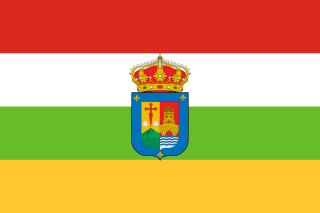
La Rioja is an autonomous community and province in Spain, in the north of the Iberian Peninsula. Its capital is Logroño. Other cities and towns in the province include Calahorra, Arnedo, Alfaro, Haro, Santo Domingo de la Calzada, and Nájera. It has an estimated population of 315,675 inhabitants, making it the least populated autonomous community of Spain.

Tlalmanalco is a municipality located in the far south-eastern part of the State of Mexico. The municipal seat and second largest town in the municipality is the town of Tlalmanalco de Velázquez The name is from the Nahuatl language, meaning “flat area.” The municipality's seal shows flat land, with a pyramid on it, representing its pre-Hispanic history, surrounded by small mountains, which is how the area was represented in Aztec codices. The municipality is bordered by the municipalities of Chalco, Ixtapaluca, Cocotitlan, Temamatla, Tenango del Aire, Ayapango and Amecameca. It also shares a border with the neighboring state of Puebla. Much of the municipality borders the Iztaccihuatl-Popocatepetl National Park. For this reason, Iztaccihuatl volcano dominates the landscape. The town has been designated as a “Pueblo con Encanto” by the government of the State of Mexico.

Villa de Zaachila is a town and municipality in Oaxaca, Mexico, 6 km (3.7 mi) from Oaxaca City. It is part of the Zaachila District in the west of the Valles Centrales Region. In the pre-Hispanic era, it was the main city-state for the Valley of Oaxaca after the fall of Monte Albán, and the Zaachila Zapotecs were the prominent political force for much of the Valley of Oaxaca when the Spanish arrived. Since then, it has been mostly quiet, but political unrest has been prominent since 2006 and the municipality has two parallel governments.

Bañares is a municipality of La Rioja, Spain. It is located in the comarca of Santa Domingo de la Calzada, some 45 km west of Logroño.

Grupo Yaramá is a group of musicians who base their work on the musical traditions of Senegal, Mali and Guinea in West Africa. They are often accompanied by dancers. Their work has been recorded in the documentary film On-Yaramá (2008), presented at the African Film Festival of Tarifa.

Stilt jousting is a 600-year-old tradition of the city of Namur, Belgium, in which teams of costumed stilt wearers attempt to knock each other to the ground.
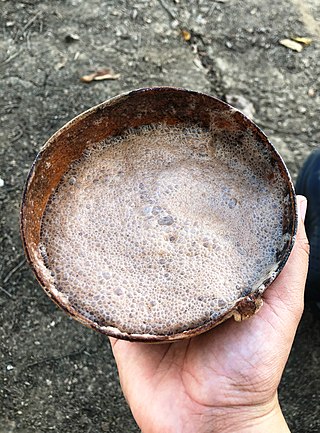
Popo is a foamy and cold drink typical in the south of the state of Veracruz and some areas of the state of Oaxaca, like the basin of Papaloapan or Istmo. Its main ingredient is cocoa, which is sweetened with sugar or panela, and is mixed with water; also azquiote called cocomeca en Oaxaca is added, and/or chupipi, both foaming agents. Some recipes frequently flavor it with cinnamon and/or anise, and they thicken it with maize dough or rice.

